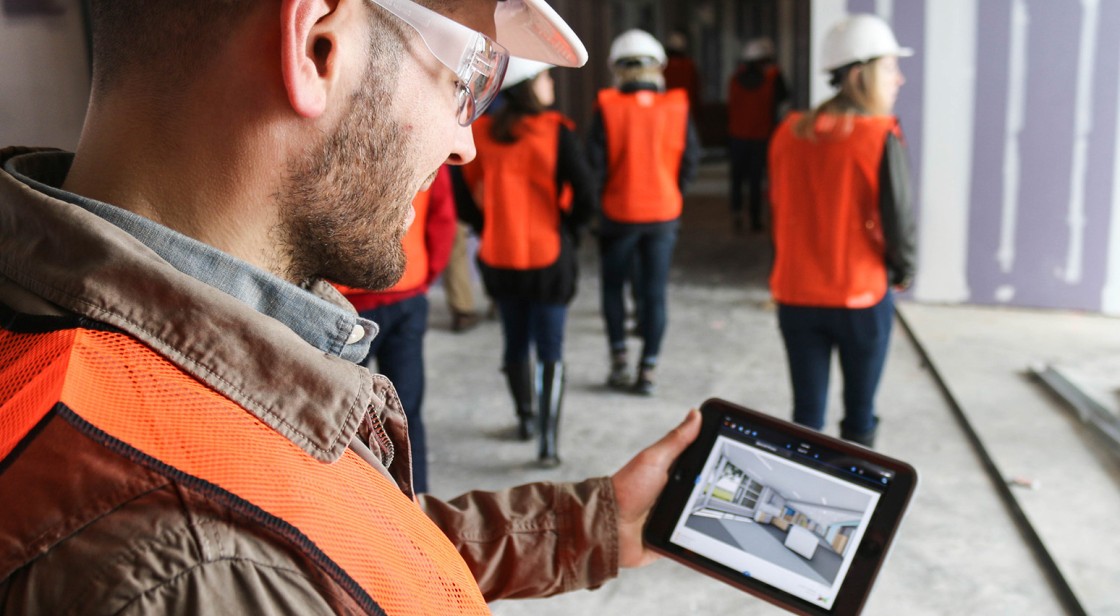When most people think about the practice of architecture, they tend to focus on how we as designers develop unique solutions to meet the primary goals and visions of our clients. However, while design is a big part of what we do, it is just one step within a holistic approach to achieving constructed realities. Unfortunately, the translation of our work into the built environment is rife with external variables that are outside of our control. To combat uncertainty and ensure the successful execution of our work, we focus on three key areas—team, process, and product. In this blog post, the first of a three-part series, we will expand on the importance of an integrated team.
BUILDING RELATIONSHIPS
The root of our approach is to continually build the teams necessary to support our work. We undertake this effort on an ongoing basis as we expand our network of staff, clients, consultants, construction managers, general contractors, sub-contractors, and suppliers. We have found that having a proactive relationship with all of our trusted industry partners is paramount in seeing each project as part of an iterative process, not an independent one-off undertaking. This mindset extends beyond our typical project interactions into marketing pursuits, industry events, pre-construction services, design-build partnerships and other efforts. As our relationships and experience evolve, so does our work.
GETTING OUT IN THE FIELD
To further the collaborative nature of our practice, we maintain a strong site presence on all projects. The relationship between architects and our industry partners can make or break a construction project regardless of the quality of the design and documentation, so building that strong foundation is essential. Much of this is achieved through making ourselves accessible to those in the field, whether it be via consistent walk-throughs with sub-contractors after on-site project meetings or expanding lines of communication while off-site. Despite the up-front effort, this pays dividends in proactively addressing coordination and quality issues while reducing reliance upon requests for information and construction sketches. It also solidifies our belief that this is a team effort focused on delivering a quality product for the end-user, not a competition between the architect and contractor. This should be the fun part of the job!
GOING DIGITAL
In an effort to increase collaboration among the numerous stakeholders on each project team, the industry has benefited greatly from an influx of technological advances to increase communication and facilitate work in the field. From submittal processing and project scheduling software to laser surveying and three-dimensional printing, there are many ways to make the process more efficient and less reliant on human engagement. However, with this comes a trade-off with respect to how much time is then left for construction project managers and site superintendents to actively engage with conditions on-site. If not properly managed, this can significantly detract from the performance of a project and issues can arise through this lack of oversight. To confront this, clients have been seeing the value added by further architectural involvement on-site to provide supplemental assistance and resources. In support of this, we deploy a cache of tablets for staff to utilize in the field to enable access to all project drawings, specifications, and construction-related documents to provide impactful assistance in the field. These tools also allow us to better record the progress of each project along the way, increasing the efficiency of field note and punch list development for use by all team members.
EMPOWERING THE TEAM
The increase of available assistance from the design-side of the project team is invaluable because it allows those in field to integrate better into the project as a whole. With buy-in from those physically involved in its construction, a project gains advocates who directly influence the quality of the final product. Aspirations and intent conveyed from the owner and design team to each individual on-site is much more impactful than what can be inferred through standard two-dimensional drawings. Understanding that three-dimensional renderings and diagrams are produced regularly for projects during the design process, they are readily available to be incorporated into construction documentation for reference in the field. Reviewing these with crews as work progresses empowers everyone to help achieve the vision and can even identify conflicts and detailing concerns early in the process, avoiding unnecessary costs and associated delays. In a world where labor is at a premium, why not work together and push each other to make the best of it?
Be on the lookout for Part II of this series in which we will focus on harnessing the power of the project team to further our construction administration process.

